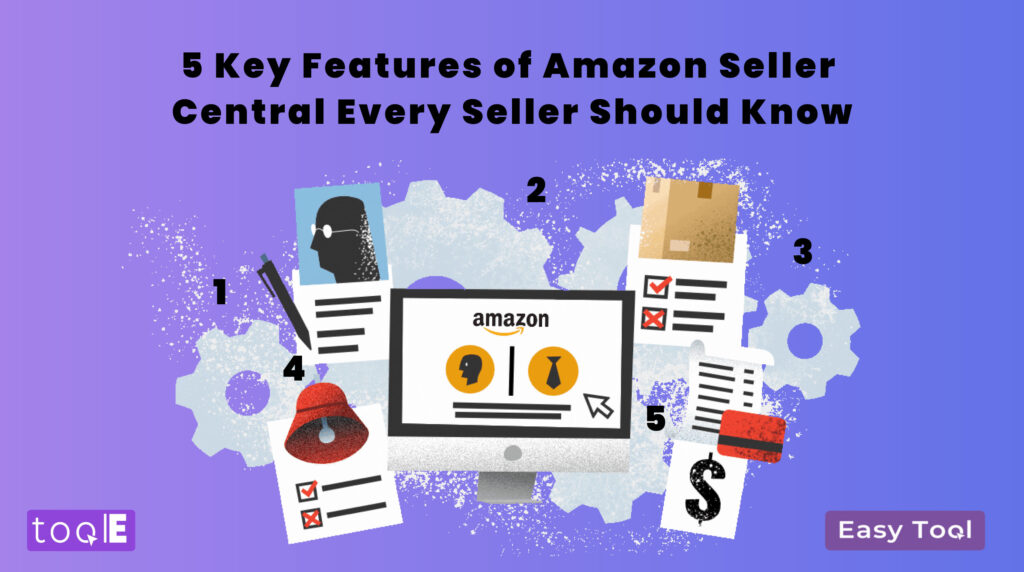Expanding Your Amazon Business Internationally: Unlocking Global Growth Opportunities

Expanding Your Amazon Business Internationally: Unlocking Global Growth Opportunities Navigating Amazon’s Seller Performance Metrics and Policies Unlock Scalable Success with Easy Tool for Shopify Plus Merchants Staying Ahead of the Competition: Advanced Techniques for Sellers on Amazon Seller Central Simplify Your E-commerce Operations by Easily Syncing Your Amazon Custom Products to Shopify with Amazon Easy Tool 5 Key Features of Amazon Seller Central Every Seller Should Know Sailing Smoothly Beyond the Holidays: Tailored eCommerce Strategies for Shopify and Amazon Sellers How to connect your Shopify account to Amazon in 3 steps What is an Amazon seller Central SKU? Harnessing Synergy: The Advantageous Fusion of Shopify and Amazon for Merchants Expanding Your Amazon Business Internationally: Unlocking Global Growth Opportunities 17 July 2024 • 5 minute read In the dynamic world of e-commerce, Amazon has emerged as a global powerhouse, providing sellers with access to a vast customer base across multiple continents. As a savvy Amazon seller, expanding your business into international markets can unlock a world of growth opportunities, but it also comes with its own set of challenges. In this blog, we’ll explore the benefits and considerations of selling on Amazon’s global marketplaces, share insights on selecting the right international markets, and provide a step-by-step guide to setting up an Amazon account in new regions. The Benefits of Selling Internationally on Amazon Tapping into New Customer Bases: By expanding your presence on Amazon’s global platforms, you gain access to a diverse customer base, each with unique preferences and purchasing patterns. This diversification can help mitigate the risks associated with relying on a single market and open up new avenues for sales growth. Increased Revenue Potential: With a larger customer pool to engage, the potential for increased revenue and profitability is significant. International expansion can unlock new opportunities for your products, allowing you to capitalize on untapped demand. Seasonality Advantages: Different regions often have distinct seasonal patterns, which can help you balance your sales throughout the year. When one market may be experiencing a slower period, another could be in the midst of a sales peak, evening out your revenue streams. Competitive Edge: By establishing a presence in multiple Amazon marketplaces, you gain a competitive advantage over sellers who are limited to a single region. This can help you stay ahead of the curve and solidify your position as a trusted global brand. Selecting the Right International Markets Choosing the appropriate international markets to expand into is crucial for the success of your Amazon business. Consider the following factors when evaluating potential markets: Market Size and Growth Potential: Research the size of the e-commerce market in the target region and its projected growth trajectory. This can help you assess the long-term viability and scalability of your venture. Demand for Your Products: Analyze consumer preferences and buying patterns in the target market to ensure there is a demand for your products. Utilize Amazon’s sales data and market research tools to gauge the fit. Regulatory and Tax Considerations: Familiarize yourself with the legal and tax requirements for selling in the new market. This may include understanding customs regulations, product certifications, and applicable taxes. Logistics and Infrastructure: Evaluate the logistics and shipping capabilities within the target market, as well as the overall infrastructure for efficient order fulfillment and customer service. By carefully considering these factors, you can identify the most promising international markets that align with your products, business goals, and resources. Challenges of Selling on Amazon’s Global Marketplaces While the benefits of international expansion are undeniable, it’s essential to be aware of the challenges that come with selling on Amazon’s global platforms: Language and Cultural Differences: Adapting your product listings, marketing materials, and customer service to the local language and cultural nuances can be a significant hurdle. Effective localization is key to connecting with your new customer base. Regulatory Compliance: Each country has its own set of rules and regulations governing e-commerce, product safety, and taxation. Navigating these complexities can be time-consuming and requires in-depth research and coordination. Logistical Complexities: Ensuring efficient order fulfillment, managing inventory, and providing reliable shipping and returns across international borders can pose logistical challenges. Partnering with local logistics providers or utilizing Amazon’s fulfillment services can help mitigate these issues. Increased Competition: As you enter new markets, you may face increased competition from local and global sellers. Staying agile, adapting your strategies, and leveraging your unique selling points will be crucial to standing out in the crowd. Step-by-Step Guide to Setting Up an Amazon Account in New Regions Research and Select the Target Market(s): Conduct thorough market analysis to identify the most promising regions for your products and business model. Consider factors such as market size, growth potential, demand for your products, and regulatory environment. Register for an Amazon Seller Account: Follow the specific registration process for the target Amazon marketplace, ensuring compliance with all requirements. This may involve providing business documentation, tax information, and other necessary details. Localize Your Product Listings: Translate product descriptions, titles, and other relevant information into the local language(s) to cater to your new customer base. Adapt your imagery, pricing, and shipping options to match local preferences and expectations. Optimize for Local Search: Familiarize yourself with the search algorithms and keywords relevant to the target market to ensure your products are easily discoverable. Utilize Amazon’s tools and resources to research and implement effective SEO strategies. Adapt Your Pricing and Shipping Strategies: Consider factors such as currency exchange rates, local competition, and shipping costs to price your products competitively in the new market. Offer flexible and affordable shipping options to meet customer expectations. Provide Exceptional Customer Service: Offer localized customer support, easy returns, and responsive communication to build trust and customer loyalty in the new market. Leverage Amazon’s customer service tools and resources to deliver a seamless experience. Monitor and Analyze Performance: Continuously track your sales, customer feedback, and market trends in the new region. Use this
Staying Ahead of the Competition: Advanced Techniques for Sellers on Amazon Seller Central

In the fiercely competitive landscape of e-commerce, Amazon reigns supreme as the ultimate marketplace for sellers. With millions of products and countless sellers vying for attention, standing out and staying ahead of the competition is no easy feat. To thrive on Amazon, sellers must continually refine their strategies and leverage advanced techniques to maintain a competitive edge. In this comprehensive guide, we’ll delve into some advanced tactics that sellers can employ on Amazon Seller Central to stay ahead of the game.
Simplify Your E-commerce Operations by Easily Syncing Your Amazon Custom Products to Shopify with Amazon Easy Tool

In the competitive world of e-commerce, offering customizable products can be a game-changer for businesses looking to provide unique and personalized experiences to their customers.
Amazon, one of the largest online marketplaces, recognizes the importance of customization and has introduced a feature called Amazon Custom. This feature allows sellers to offer customizable products to their customers. However, managing and synchronizing these custom products across multiple platforms can be a daunting task. That’s where Amazon Easy Tool comes in. Amazon Easy Tool provides a seamless solution to sync Amazon’s customizable products to Shopify, streamlining your e-commerce operations. Let’s explore how this integration can benefit your business.
5 Key Features of Amazon Seller Central Every Seller Should Know

Amazon Seller Central is a powerful platform that empowers sellers to efficiently manage their Amazon business. Whether you’re a new seller or an experienced one, understanding the key features of Amazon Seller Central is crucial for achieving success. In this blog post, we will explore five key features that every seller should know.
Sailing Smoothly Beyond the Holidays: Tailored eCommerce Strategies for Shopify and Amazon Sellers

As the festive lights dim and the decorations come down, eCommerce sellers on platforms like Shopify and Amazon face the challenge of keeping the sales momentum alive. It’s a familiar tale: the post-holiday slump hits, and consumer spending tightens. But with the right approach, this period can be a time of strategic growth and opportunity.

